36 hours in Mexico City
New York Times
last updated: Nov 24,2022

Few
places conjure Mexico City’s mix of vibrant style, outstanding gastronomy, rich
history, and bustling street life. Post-pandemic, that blend has gone into
overdrive, with new museums featuring the sweep of Mexican art, a panoply of
restaurants and bars, and an expanding fashion scene that embraces traditional
craft. You can shop for leather bags and ponchos, sample local craft beers, and
join jazz fans for a concert in a cozy club. Amid the buzz, it’s also worth seeking
out the secrets of the Historic Center, where travelers can discover hidden
murals, explore an ancient market’s warrens and immerse themselves in the
city’s layers and incongruities.اضافة اعلان
Here is how to do it in 36 hours.
Friday
3pm: Go back in time. Guillermo Tovar de Teresa was a self-taught historian and eccentric who wrote prodigiously about Mexican art of the colonial period and the 19th century. Now his house, a 1911 mansion in Colonia Roma that he meticulously restored, has been turned into a museum, featuring pieces from his collections of art, furniture, ceramics, and books. Many of the rooms remain as he decorated them before his death in 2013, crammed with portraits of the emerging bourgeoisie of newly independent Mexico, devotional paintings illustrating the exuberant religiosity of New Spain and elaborate marquetry furniture. A magnificent crystal mirror reflects the entry hall, antique ironwork adorns the bedroom and Mexican landscapes by the 19th-century British painter Daniel Thomas Egerton line the patio hallway. Entry is free.
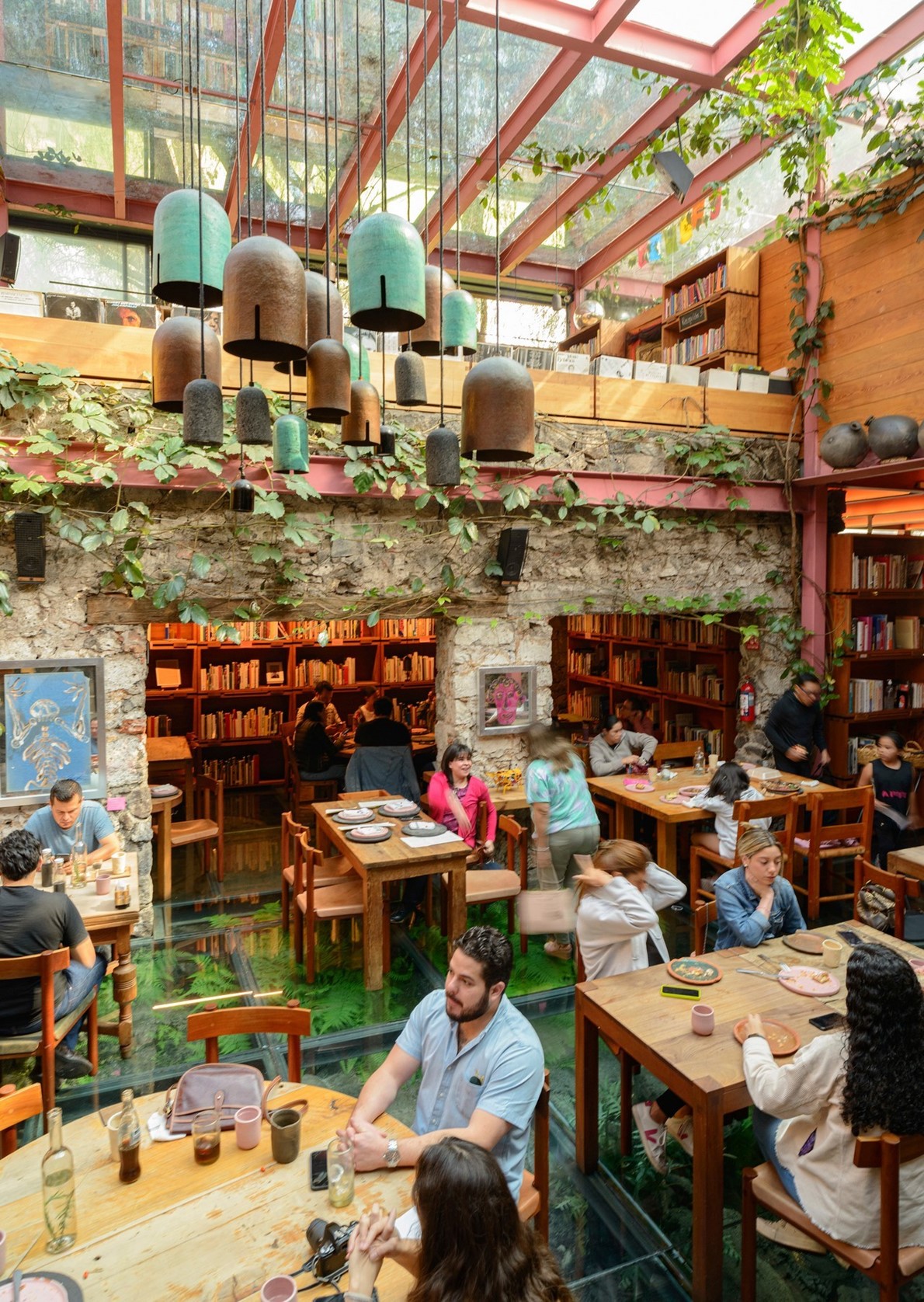
Patrons eat breakfast at the Tetetlán cultural center in Mexico City.
4:30pm: Shop local. Emerging Mexico-based designers are drawing their inspiration from the country’s imagery and architectural forms, while emphasizing sustainability and fair prices for craftspeople. Boutiques showcasing local fashion are clustered in Colonia Juárez along the quiet Marsella and Havre streets. Two designers, Francisco Cancino and Cynthia Buttenklepper, share a flagship store and adapt traditional silhouettes and textiles in deep Mexican colors. Mr Fox sells elegant leather bags and accessories. At Vera, classic Mexican weaving techniques and embroidery are updated into a joyful collection of tops, dresses, and bags. Nothing is sacred in JPEG’s irreverent designs, not even the Virgin of Guadalupe, whose image is stamped on its shirts.
7pm: Taste craft beer and then do dinner, Roma style. Craft beers have taken off in Mexico. One local brewery, Monstruo de Agua, has opened a bright, plant-filled new taproom in Colonia Condesa. Order a small tasting glass of stout flavored with fig and sugar cane, or maybe a white I.P.A. produced with agave syrup. Accompany your beer with esquite criollo, a sophisticated take on a classic corn street snack. In nearby Roma, Meroma’s intimate dining room offers local ingredients accented with unexpected touches, like quail marinated with harissa. And for a taste of the city’s new wine scene, try Vigneron, a Roma bar and restaurant that spotlights small producers in France, Spain, Mexico, and Italy.
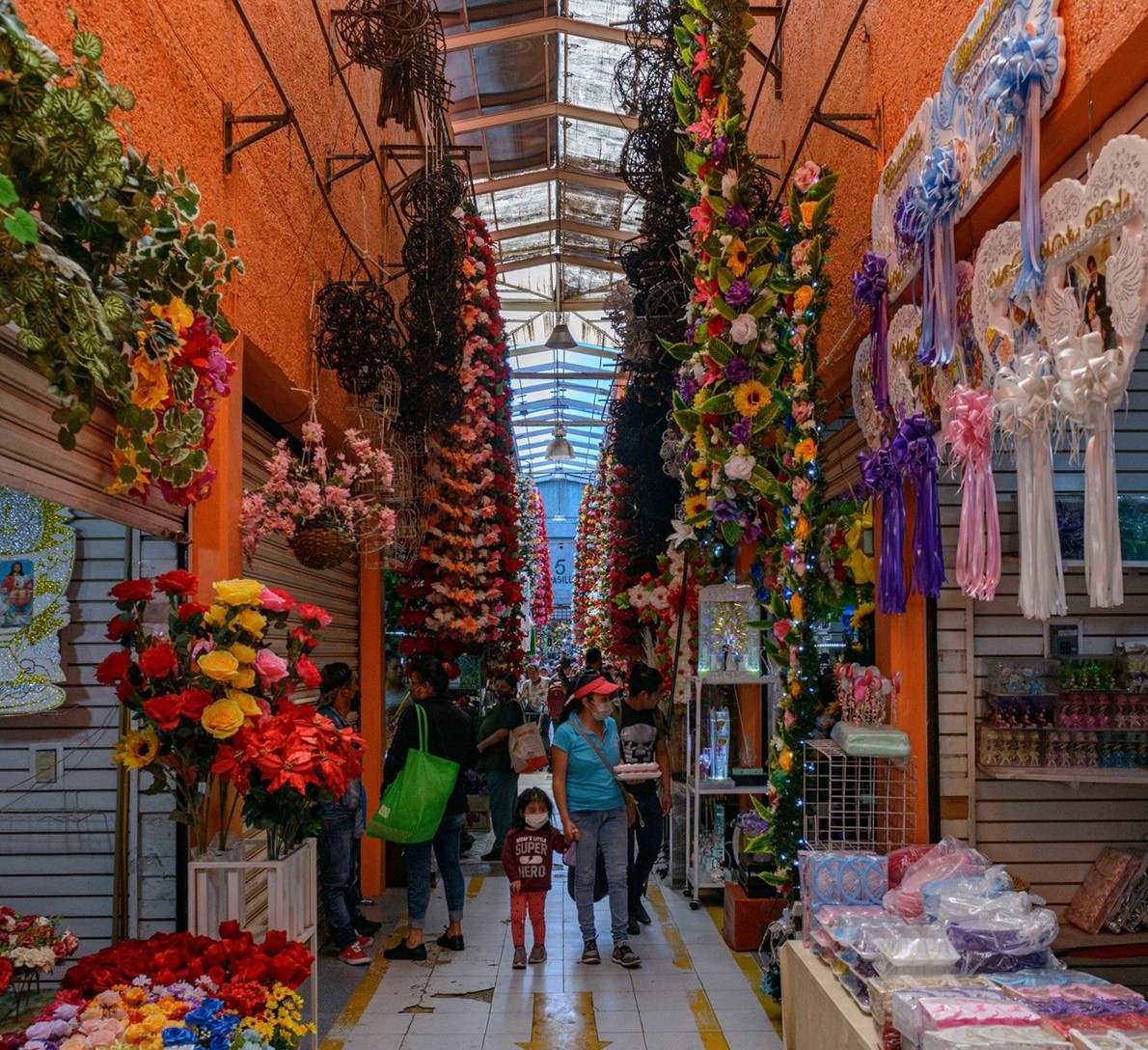
Visitors walk through La Merced.
10pm: Step to a salsa beat. Mama Rumba is an unassuming salsa club in Roma that has been around for three decades and remained loyal to its winning formula. Expert and aspiring dancers are all welcome to sway and spin to the Cuban house band, Charanga One. A DJ gets the rhythm going before the musicians take the stage at 11pm Arrive early to practice your moves and snag a table where you can nurse a mojito or a margarita between sets. If you are feeling shy, sit upstairs and watch the musicians and dancers from the balcony.
Saturday
9:30am: Visit Mexico’s oldest market. Spend the day in and around the Historic Center beginning with La Merced, the market that dates back to the Aztecs. It is intimidating, both for its size and insularity. Street crime is a problem, so approach it with a guide who knows its passageways and vendors. Eat Mexico offers a 3-1/2-hour food tour in English. At Señora Edith’s stall, try pre-Hispanic delicacies of toasted grasshoppers (chapulines) and ants (chicatanas), along with tiny freshwater fish and shrimp. Señora Balbina offers her sophisticated poblano and pipián moles on a blue corn tamal. The tour ends at Roldán 37, a traditional Mexican restaurant converted from an old chile-drying warehouse. Other tours in English: photojournalist Keith Dannemiller leads photography tours of various neighborhoods; writer David Lida designs custom tours.
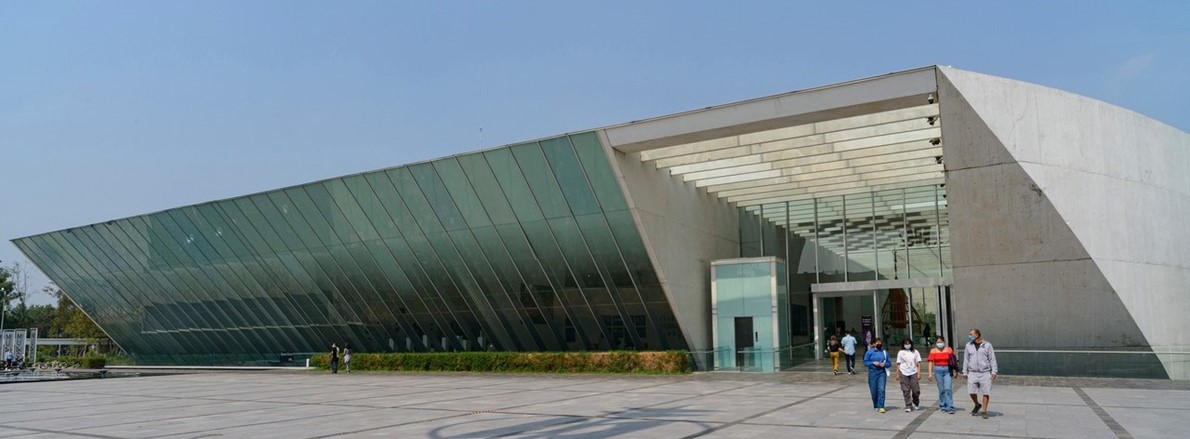
The University Museum of Contemporary Art, known as the MUAC, in Mexico City in November 2022.
2pm: Seek out hidden murals. The murals in the Abelardo L. Rodríguez market, a few minutes’ walk northeast of the giant Zócalo, the main square, were painted by students of Diego Rivera, among them Marion and Grace Greenwood, sisters from New York. Suffused with passion for social justice, the sisters’ murals, depicting the exploitation of farmworkers and miners, are alongside the stairway and first-floor landing at the market’s northeast corner. On the same landing is Isamu Noguchi’s 72-foot-long cement and brick mural, “History as Seen from Mexico in 1936.” At the nearby Baroque Antiguo Colegio de San Ildefonso are early examples of the century-old Mexican muralist movement. José Clemente Orozco’s frescoes cover three stories on the main patio’s north side and capture the anguish and hope of post-Revolutionary Mexico.
4pm: Explore Mexican art. Two more 18th-century landmarks recently opened with collections of Mexican art in and around the Historic Center. The works at the Foro Museo Valparaíso, in a former palace now owned by a bank, encompass colonial portraits, including one of the writer Sor Juana Inés de la Cruz that was painted after her death in 1695, 19th-century landscapes and images of iconic Mexican figures. The 20th-century galleries feature Diego Rivera’s 1942 “Calla Lily Vendor” and paintings by the surrealists Remedios Varo and Leonora Carrington (free entry). A short car ride away is the Kaluz Museum, which showcases a private collection within the renovated Antiguo Hospicio de Tomás de Villanueva. Organized thematically, the display sets up a dialogue between earlier Mexican paintings and 20th-century interpretations.
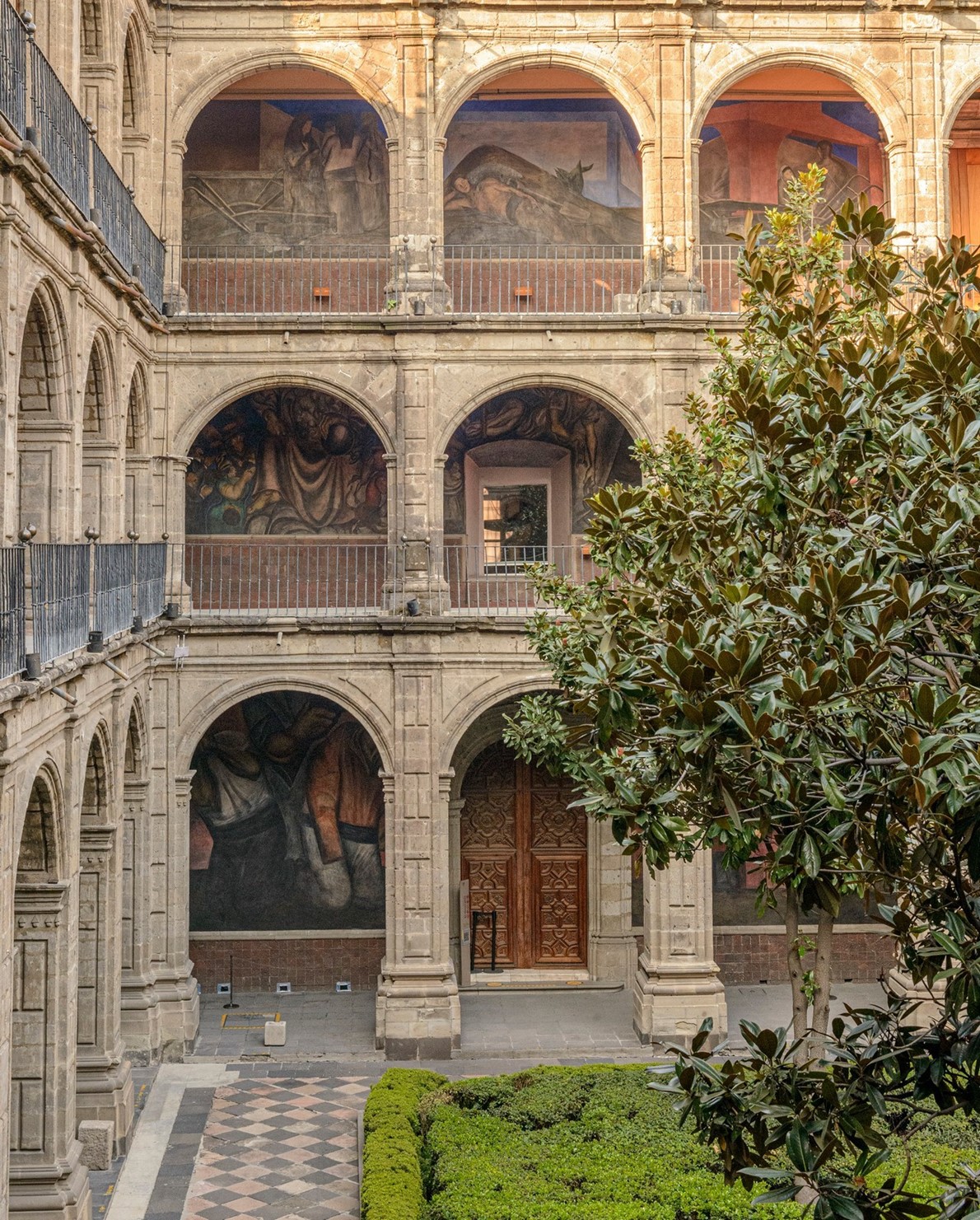
José Clemente Orozco’s frescoe.
6pm: Sample pulque or mescal. Explore a trio of nearby bars south of Alameda Park. At Pulquería Las Duelistas, tourists and locals squeeze in together to drink pulque, the pre-Hispanic fermented agave sap (beware its viscous consistency) that has become an acquired taste of the hipster crowd. A short walk away is Tío Pepe, an old-fashioned cantina at the edge of Chinatown where the red vinyl booths, low hum of conversation, and old photographs beckon you to stay and work through the voluminous drinks list. Bósforo is a mezcalería tucked behind red curtains and steel doors that does not advertise — but everyone seems to find it anyway after its 7pm opening time.
8:30pm: Head to Juárez. After the commotion of the Historic Center, go to Juárez for a quiet dinner at Amaya. Unlike some of the buzzier stalwarts of the city’s creative dining scene in Roma, Amaya is where locals linger over wine and conversation. It is chef Jair Téllez’s second restaurant in the city (his first is Merotoro), and his idiosyncratic take on Baja-Med cuisine is consistently excellent. The varied share-style menu, which emphasizes local and seasonal ingredients, includes a fish ceviche tostada topped with fried squid, gnocchi with beef ragout, and braised lamb with roasted vegetables. The high-ceilinged dining room is accented with a colorful mural and vivid floor tiles. The restaurant serves natural wines, which Téllez imports himself. Dinner for two without wine.
10:30pm: Listen to live jazz. In a city that seems to resound with the beat of Latin music, live jazz was once hard to find. Not anymore. At the spacious Parker & Lenox bar in Juárez, which has low lighting, lounge seating, and original cocktails, immerse yourself in the music upfront, or simply appreciate the vibe from farther back. The smaller space at Jazzatlán Capital in Roma attracts a dedicated crowd for an evening that’s all about the music in an intimate setting.
Sunday
10am: Enjoy breakfast with Barragán. Head south for breakfast at the Tetetlán cultural center in the Pedregal neighborhood. It opened five years ago to complement the restoration of a private home, Casa Pedregal, designed by the great Mexican architect Luis Barragán at the end of the 1940s. Constructed around the volcanic stone walls of the house’s original stables, Tetetlán is a library of art and architecture books, an exhibition space, a shop, and a restaurant. Breakfast options include chilaquiles (fried corn tortillas in salsa), and scrambled eggs with escamoles, or crunchy ant larvae. Much of the produce comes from the floating gardens along the vestiges of Aztec canals in the far-south Xochimilco district. Tours of Casa Pedregal in English must be booked ahead by email.
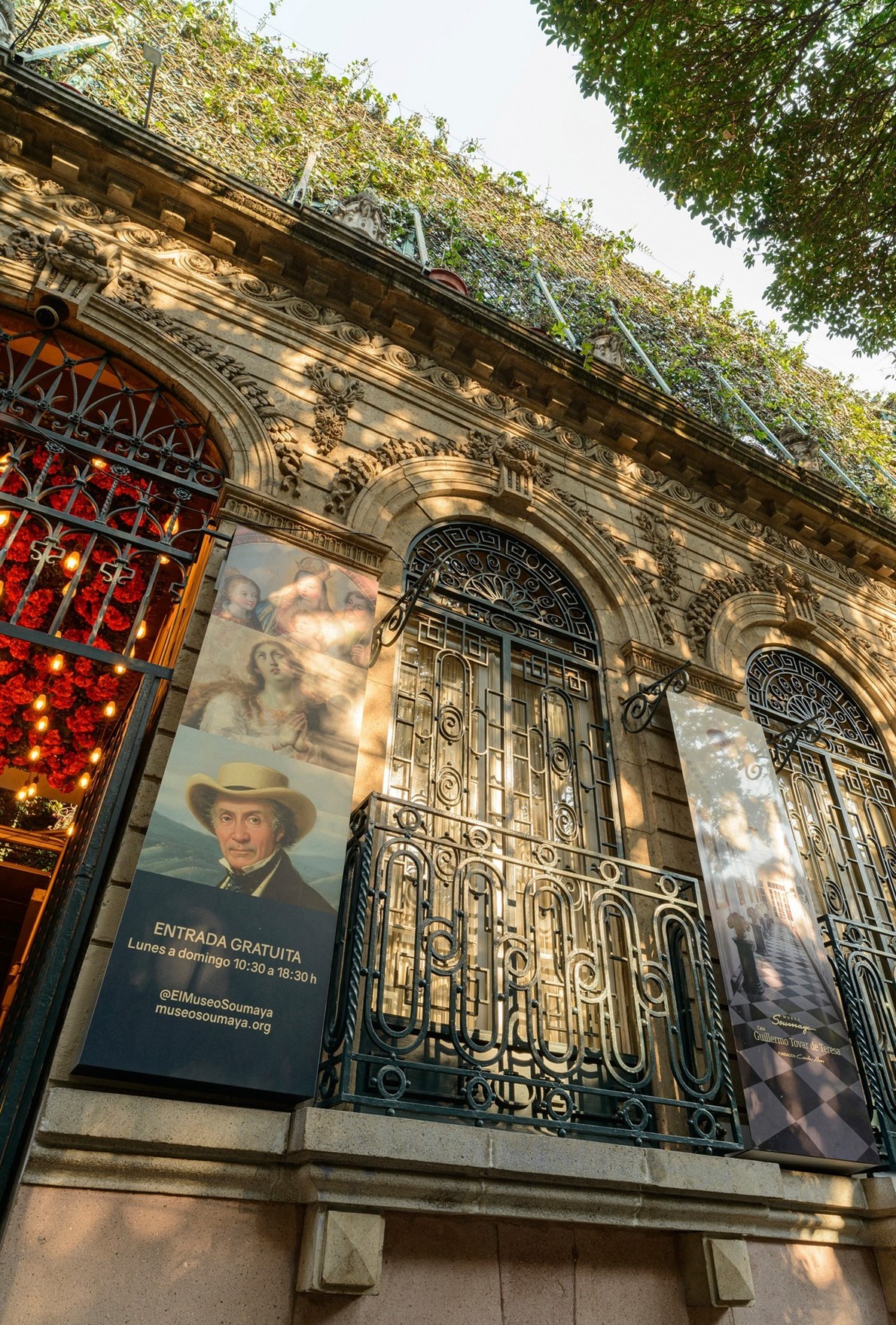
The Guillermo Tovar de Teresa Museum in Mexico City.
12pm: See a museum that pushes artistic boundaries. A short car ride away, the University Museum of Contemporary Art, known as the MUAC, hosts exhibitions from around the world, curates its own shows, and collects the work of Mexican contemporary artists. The museum is housed in a striking glass building with a sloping facade designed by Mexican architect Teodoro González de Leon, who died in 2016, on the campus of the National Autonomous University of Mexico. The giant university complex is itself a UNESCO World Heritage site, recognized for its mid-20th-century combination of modernist architecture and pre-Hispanic iconography, particularly its central library.
Read more Travel
Jordan News
Here is how to do it in 36 hours.
Friday
3pm: Go back in time. Guillermo Tovar de Teresa was a self-taught historian and eccentric who wrote prodigiously about Mexican art of the colonial period and the 19th century. Now his house, a 1911 mansion in Colonia Roma that he meticulously restored, has been turned into a museum, featuring pieces from his collections of art, furniture, ceramics, and books. Many of the rooms remain as he decorated them before his death in 2013, crammed with portraits of the emerging bourgeoisie of newly independent Mexico, devotional paintings illustrating the exuberant religiosity of New Spain and elaborate marquetry furniture. A magnificent crystal mirror reflects the entry hall, antique ironwork adorns the bedroom and Mexican landscapes by the 19th-century British painter Daniel Thomas Egerton line the patio hallway. Entry is free.

Patrons eat breakfast at the Tetetlán cultural center in Mexico City.
4:30pm: Shop local. Emerging Mexico-based designers are drawing their inspiration from the country’s imagery and architectural forms, while emphasizing sustainability and fair prices for craftspeople. Boutiques showcasing local fashion are clustered in Colonia Juárez along the quiet Marsella and Havre streets. Two designers, Francisco Cancino and Cynthia Buttenklepper, share a flagship store and adapt traditional silhouettes and textiles in deep Mexican colors. Mr Fox sells elegant leather bags and accessories. At Vera, classic Mexican weaving techniques and embroidery are updated into a joyful collection of tops, dresses, and bags. Nothing is sacred in JPEG’s irreverent designs, not even the Virgin of Guadalupe, whose image is stamped on its shirts.
7pm: Taste craft beer and then do dinner, Roma style. Craft beers have taken off in Mexico. One local brewery, Monstruo de Agua, has opened a bright, plant-filled new taproom in Colonia Condesa. Order a small tasting glass of stout flavored with fig and sugar cane, or maybe a white I.P.A. produced with agave syrup. Accompany your beer with esquite criollo, a sophisticated take on a classic corn street snack. In nearby Roma, Meroma’s intimate dining room offers local ingredients accented with unexpected touches, like quail marinated with harissa. And for a taste of the city’s new wine scene, try Vigneron, a Roma bar and restaurant that spotlights small producers in France, Spain, Mexico, and Italy.

Visitors walk through La Merced.
10pm: Step to a salsa beat. Mama Rumba is an unassuming salsa club in Roma that has been around for three decades and remained loyal to its winning formula. Expert and aspiring dancers are all welcome to sway and spin to the Cuban house band, Charanga One. A DJ gets the rhythm going before the musicians take the stage at 11pm Arrive early to practice your moves and snag a table where you can nurse a mojito or a margarita between sets. If you are feeling shy, sit upstairs and watch the musicians and dancers from the balcony.
Saturday
9:30am: Visit Mexico’s oldest market. Spend the day in and around the Historic Center beginning with La Merced, the market that dates back to the Aztecs. It is intimidating, both for its size and insularity. Street crime is a problem, so approach it with a guide who knows its passageways and vendors. Eat Mexico offers a 3-1/2-hour food tour in English. At Señora Edith’s stall, try pre-Hispanic delicacies of toasted grasshoppers (chapulines) and ants (chicatanas), along with tiny freshwater fish and shrimp. Señora Balbina offers her sophisticated poblano and pipián moles on a blue corn tamal. The tour ends at Roldán 37, a traditional Mexican restaurant converted from an old chile-drying warehouse. Other tours in English: photojournalist Keith Dannemiller leads photography tours of various neighborhoods; writer David Lida designs custom tours.

The University Museum of Contemporary Art, known as the MUAC, in Mexico City in November 2022.
2pm: Seek out hidden murals. The murals in the Abelardo L. Rodríguez market, a few minutes’ walk northeast of the giant Zócalo, the main square, were painted by students of Diego Rivera, among them Marion and Grace Greenwood, sisters from New York. Suffused with passion for social justice, the sisters’ murals, depicting the exploitation of farmworkers and miners, are alongside the stairway and first-floor landing at the market’s northeast corner. On the same landing is Isamu Noguchi’s 72-foot-long cement and brick mural, “History as Seen from Mexico in 1936.” At the nearby Baroque Antiguo Colegio de San Ildefonso are early examples of the century-old Mexican muralist movement. José Clemente Orozco’s frescoes cover three stories on the main patio’s north side and capture the anguish and hope of post-Revolutionary Mexico.
4pm: Explore Mexican art. Two more 18th-century landmarks recently opened with collections of Mexican art in and around the Historic Center. The works at the Foro Museo Valparaíso, in a former palace now owned by a bank, encompass colonial portraits, including one of the writer Sor Juana Inés de la Cruz that was painted after her death in 1695, 19th-century landscapes and images of iconic Mexican figures. The 20th-century galleries feature Diego Rivera’s 1942 “Calla Lily Vendor” and paintings by the surrealists Remedios Varo and Leonora Carrington (free entry). A short car ride away is the Kaluz Museum, which showcases a private collection within the renovated Antiguo Hospicio de Tomás de Villanueva. Organized thematically, the display sets up a dialogue between earlier Mexican paintings and 20th-century interpretations.

José Clemente Orozco’s frescoe.
6pm: Sample pulque or mescal. Explore a trio of nearby bars south of Alameda Park. At Pulquería Las Duelistas, tourists and locals squeeze in together to drink pulque, the pre-Hispanic fermented agave sap (beware its viscous consistency) that has become an acquired taste of the hipster crowd. A short walk away is Tío Pepe, an old-fashioned cantina at the edge of Chinatown where the red vinyl booths, low hum of conversation, and old photographs beckon you to stay and work through the voluminous drinks list. Bósforo is a mezcalería tucked behind red curtains and steel doors that does not advertise — but everyone seems to find it anyway after its 7pm opening time.
8:30pm: Head to Juárez. After the commotion of the Historic Center, go to Juárez for a quiet dinner at Amaya. Unlike some of the buzzier stalwarts of the city’s creative dining scene in Roma, Amaya is where locals linger over wine and conversation. It is chef Jair Téllez’s second restaurant in the city (his first is Merotoro), and his idiosyncratic take on Baja-Med cuisine is consistently excellent. The varied share-style menu, which emphasizes local and seasonal ingredients, includes a fish ceviche tostada topped with fried squid, gnocchi with beef ragout, and braised lamb with roasted vegetables. The high-ceilinged dining room is accented with a colorful mural and vivid floor tiles. The restaurant serves natural wines, which Téllez imports himself. Dinner for two without wine.
10:30pm: Listen to live jazz. In a city that seems to resound with the beat of Latin music, live jazz was once hard to find. Not anymore. At the spacious Parker & Lenox bar in Juárez, which has low lighting, lounge seating, and original cocktails, immerse yourself in the music upfront, or simply appreciate the vibe from farther back. The smaller space at Jazzatlán Capital in Roma attracts a dedicated crowd for an evening that’s all about the music in an intimate setting.
Sunday
10am: Enjoy breakfast with Barragán. Head south for breakfast at the Tetetlán cultural center in the Pedregal neighborhood. It opened five years ago to complement the restoration of a private home, Casa Pedregal, designed by the great Mexican architect Luis Barragán at the end of the 1940s. Constructed around the volcanic stone walls of the house’s original stables, Tetetlán is a library of art and architecture books, an exhibition space, a shop, and a restaurant. Breakfast options include chilaquiles (fried corn tortillas in salsa), and scrambled eggs with escamoles, or crunchy ant larvae. Much of the produce comes from the floating gardens along the vestiges of Aztec canals in the far-south Xochimilco district. Tours of Casa Pedregal in English must be booked ahead by email.

The Guillermo Tovar de Teresa Museum in Mexico City.
12pm: See a museum that pushes artistic boundaries. A short car ride away, the University Museum of Contemporary Art, known as the MUAC, hosts exhibitions from around the world, curates its own shows, and collects the work of Mexican contemporary artists. The museum is housed in a striking glass building with a sloping facade designed by Mexican architect Teodoro González de Leon, who died in 2016, on the campus of the National Autonomous University of Mexico. The giant university complex is itself a UNESCO World Heritage site, recognized for its mid-20th-century combination of modernist architecture and pre-Hispanic iconography, particularly its central library.
Read more Travel
Jordan News


